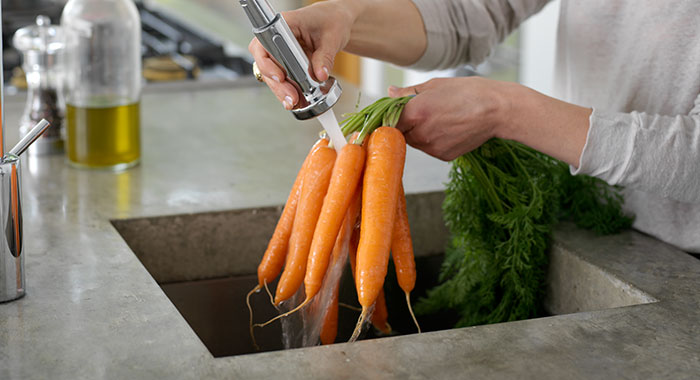
Pronounce it: ka-rot
The carrot, with its distinctive bright orange colour, is one of the most versatile root vegetables around – a result of its sweet flavour, which means it can be used raw or cooked, in sweet or savoury dishes.
Up to the Middle Ages, all carrots were purple – the orange variety was first developed in 16th-century Holland by patriotic growers who bred it in tribute to the king, William I of Orange.
That old wive’s tale about carrots helping you see in the dark isn’t entirely off-target; they’re very high in betacarotene, which is an important nutrient in maintaining healthy eyes.
Availability
All year round, but at their best mid May through to the end of September.
Choose the best
Carrots should be firm, with unblemished, bright orange skins. In spring, look out for young, thin carrots with their feathery greens still attached – they’re particularly tender and sweet.
Those on sale later in the season will be larger and tougher. Some argue that, of all vegetables, carrots that are grown organically have the most marked improvement of flavour.
Prepare it
Very young carrots just need to be scrubbed clean and topped and tailed. Older carrots may need to be be peeled (but try not to take too much off, as most of the nutrients are stored just beneath the skin) as well as topped and tailed.
Store it
Wash your carrots, cut the green tops off and store them in a plastic bag in the fridge. To keep them extra crisp, you can take this a step further and immerse them in a sealed tupperware of cold water in the fridge. Make sure you change the water every few days.
Cook it
Grate raw and use to make carrot cake or coleslaw. Slice into ribbons with a peeler for a salad. Slice into chunks and roast (roasts in 30-35 minutes). Cut into batons and steam (5-6 minutes) or boil (5-7 minutes).
Alternatives
Try parsnip or turnip.
Be the first to comment on "Carrot"